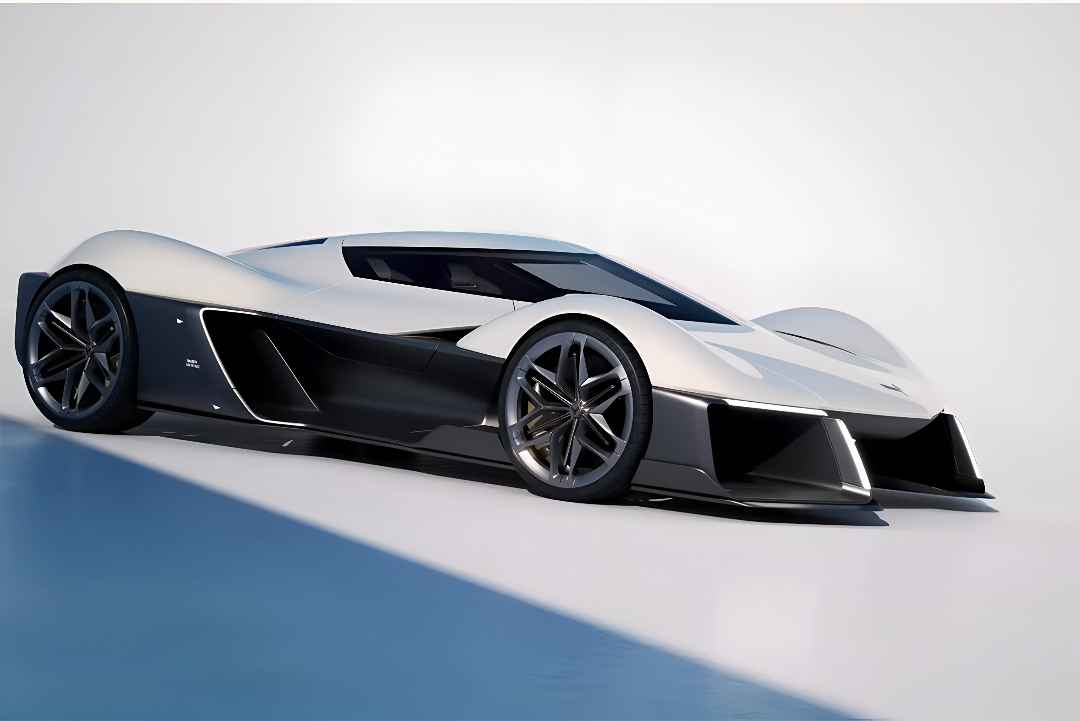While not slated for production, this futuristic hypercar showcases innovative design elements that blend Corvette’s heritage with forward-thinking styling. Created under the leadership of Julian Thomson, known for iconic designs like the Lotus Elise S1, this concept represents General Motors vision for potential future directions of the legendary Corvette brand.
The UK Design Studio Connection
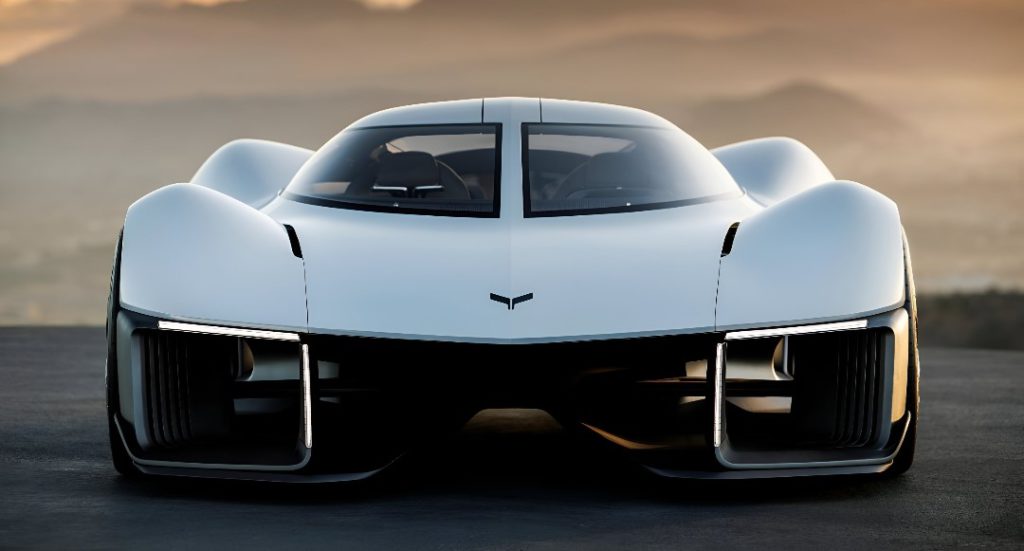
General Motors has expanded its global design footprint with a new studio in Royal Leamington Spa, outside Birmingham in the United Kingdom. This facility joins GM’s network of international design centers, which includes studios in Shanghai and Seoul. What makes this particular studio special is its leadership – Julian Thomson, a design veteran with an impressive portfolio including the iconic Lotus Elise S1, Jaguar XJ, and Land Rover LRX.
This Corvette concept represents one of the first projects to emerge from this new UK design center, bringing a fresh European perspective to an American icon.This international approach to design demonstrates how GM is seeking diverse influences to shape the future of its brands, creating a cross-cultural exchange that can lead to innovative ideas that might not emerge from domestic studios alone.
Honoring Corvette’s Heritage
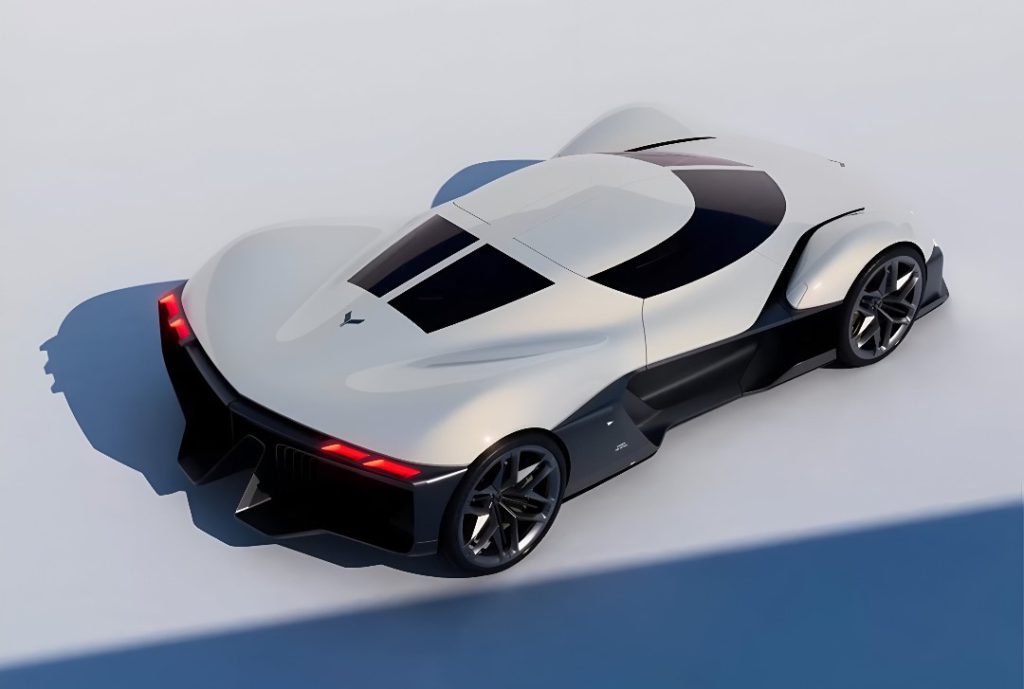
Despite its futuristic appearance, this concept maintains a strong connection to Corvette’s rich heritage, particularly the legendary 1963 Corvette Sting Ray. The most notable historical reference is the incorporation of the “split window” element from the ’63 Sting Ray, reimagined as a structural vertical spine running down the middle of the windshield. This distinctive feature divided the rear window of the original Sting Ray and has become one of the most iconic design elements in automotive history.
The concept also draws inspiration from the classic Sting Ray in its rear profile, with smooth fender haunches that give the car a muscular shape reminiscent of its ancestor. When viewed from above, these sweeping lines create a visual connection across generations of Corvette design. Even the tail lights bear a resemblance to those on the C7 Corvette, maintaining that crucial design continuity while pushing the aesthetics into the future. This thoughtful balance between heritage and innovation demonstrates how automotive design can honor the past while boldly moving forward.
Aviation-Inspired Aerodynamics
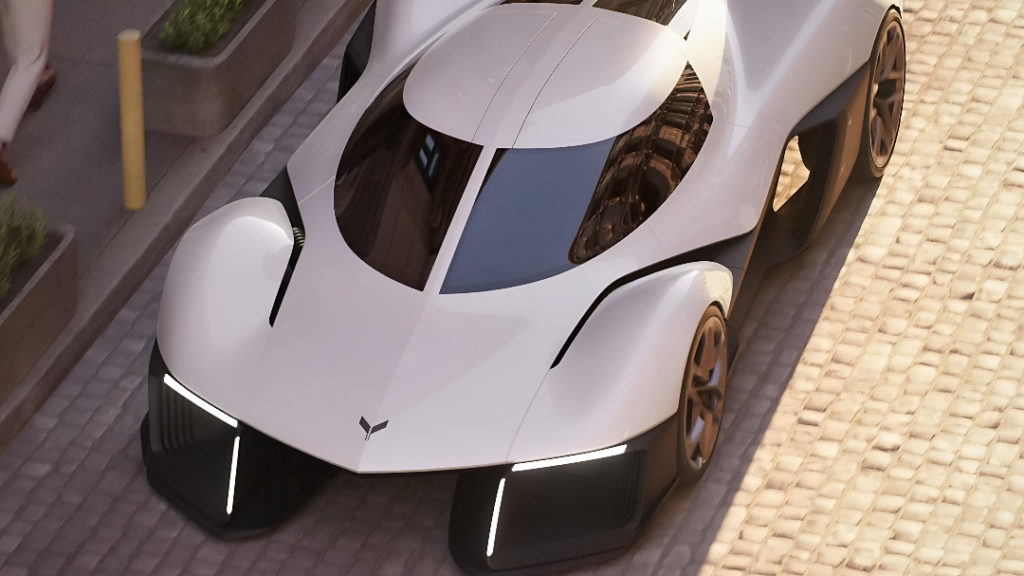
The concept’s sleek body takes significant inspiration from aviation design, with a focus on aerodynamic efficiency. Narrow sculptural lighting elements in the front frame large air ducts, likely designed to minimize drag. The sides also feature carved-out ducts that channel air through to the back, creating what GM describes as efficient air flow that eliminates the need for traditional wings and spoilers.
This approach to aerodynamics represents a more integrated, cleaner aesthetic compared to the often aggressive aero elements found on many modern hypercars. Rather than adding on visible downforce-generating components, the design incorporates air management into the very form of the vehicle. This aviation-inspired approach creates a more seamless visual experience while potentially delivering the same performance benefits. The result is a car that looks fast even when standing still, with a purposeful stance that communicates its performance potential through subtle rather than ostentatious design language.
Dramatic Proportions and Stance
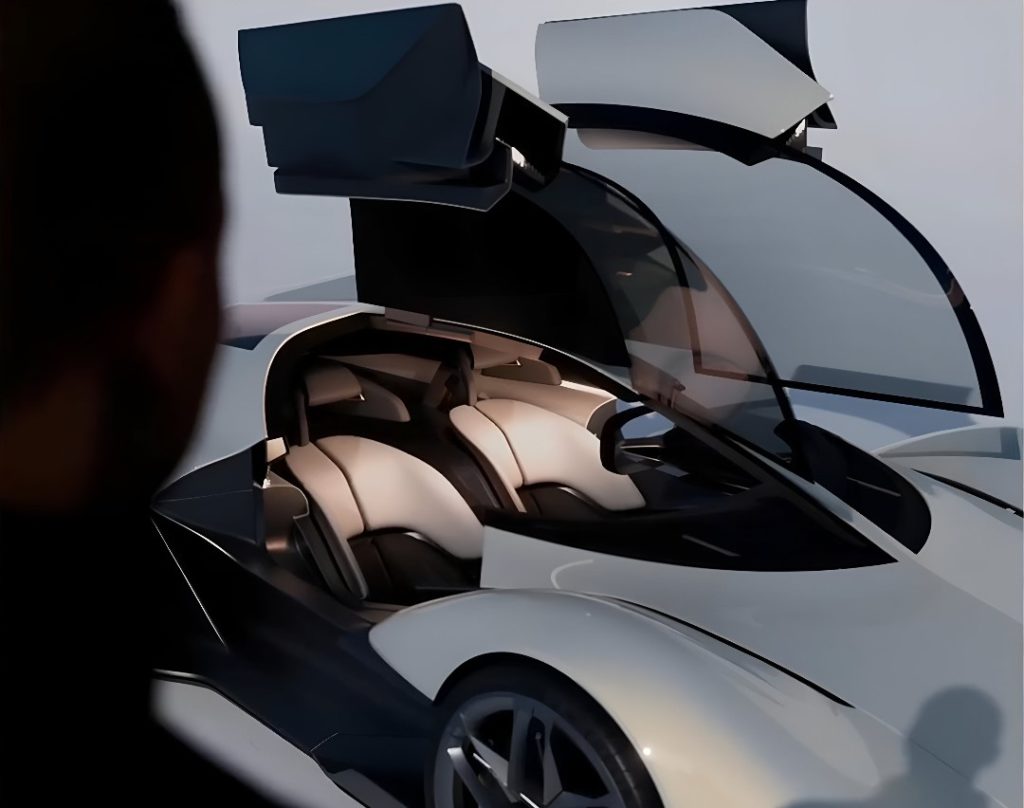
The Corvette concept embraces extreme proportions that communicate its performance intent. It features enormous wheels – 22 inches in diameter at the front and even larger 23-inch wheels at the rear – that contribute to its wide, racecar-like stance. Perhaps most dramatically, the concept has an exceptionally low seat height of just 5 inches (127 mm) off the ground, placing occupants remarkably close to the road surface.
This ultra-low profile creates a visceral connection between driver and road, while the wide track enhances the vehicle’s visual presence and suggests exceptional cornering stability. The article notes that this aggressive stance gives the concept something of a “Batmobile” quality, referencing the fictional superhero vehicle known for its dramatic, purpose-built appearance. These exaggerated proportions may not be entirely practical for production, but they communicate the concept’s performance aspirations in an immediately recognizable way, creating a powerful visual statement about the car’s intended capabilities.
Theatrical Gull-Wing Doors
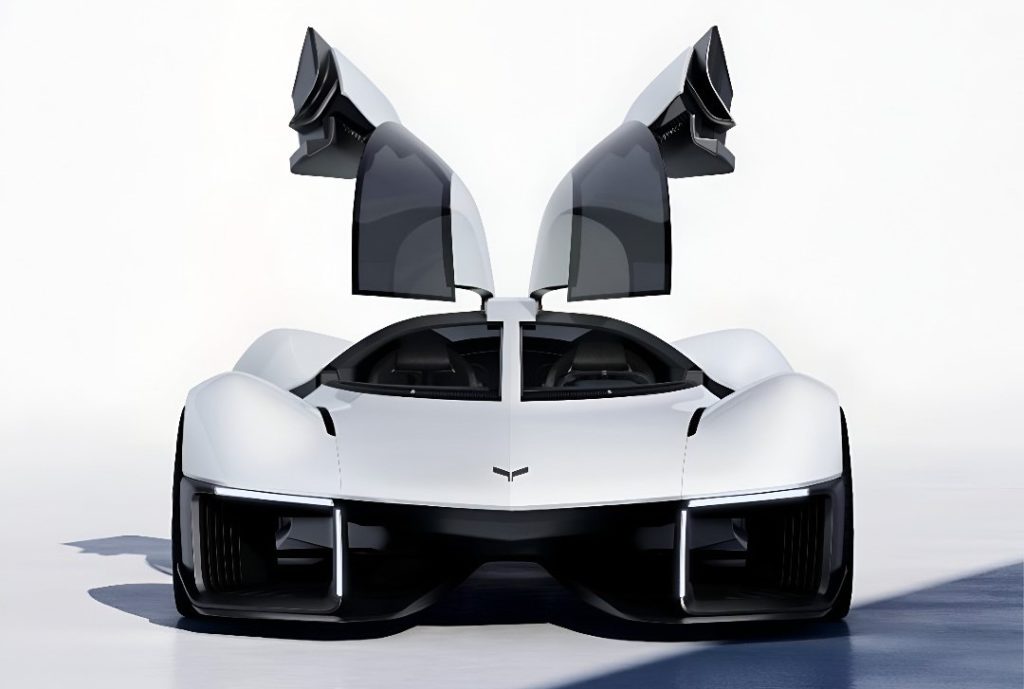
Adding to the concept’s dramatic presence are its gull-wing doors, which open upward rather than outward. This theatrical door design emphasizes the car’s “two-halves” styling approach, visually reinforcing the central spine that runs through the vehicle. Gull-wing doors have long been associated with exotic supercars since the Mercedes-Benz 300SL of the 1950s, and their inclusion on this concept immediately signals its position as something special and extraordinary.
highlighting how these distinctive doors create an emotional connection beyond mere functionality. While such doors often present practical challenges for production vehicles (including complexity, weight, and safety considerations), they’re perfectly suited for a concept car designed to showcase bold thinking and create visual impact. The upward-opening design also complements the car’s low ride height, potentially making ingress and egress more practical than conventional doors might allow in such a low-slung vehicle.
Minimalist Futuristic Interior
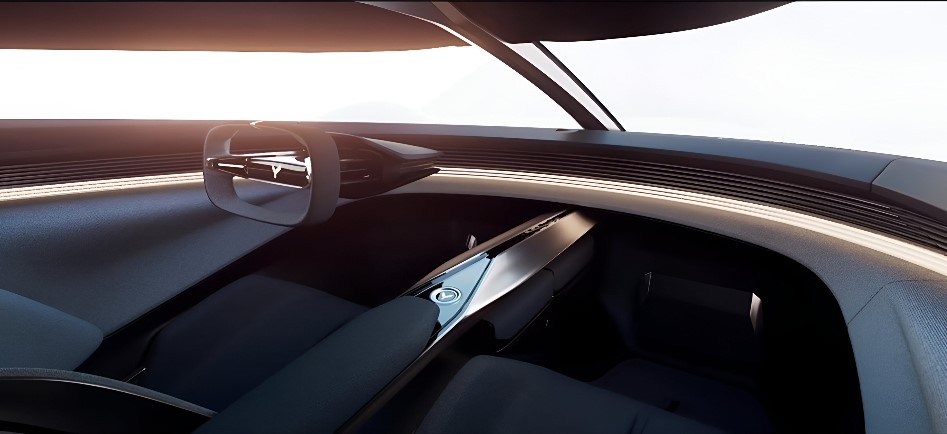
Though only seen in rendered images, the concept’s interior is as forward-thinking as its exterior. The cabin features a central spine that divides the space, creating separate cockpit-like areas for driver and passenger. A yoke-style steering wheel replaces the traditional round wheel, suggesting an aircraft-like control experience. Perhaps most striking is the sweeping console with light bars running along the length of the dashboard, creating a distinctive illuminated signature within the cabin.
This minimalist approach emphasizes clean surfaces and bold lighting elements over traditional luxury appointments, creating a space that feels more like a pilot’s cockpit than a conventional car interior. While likely too extreme for production, elements of this interior design language – particularly the distinctive lighting signatures and driver-focused layout – could influence future Corvette models in more subtle ways.
GM’s Bold Design Direction
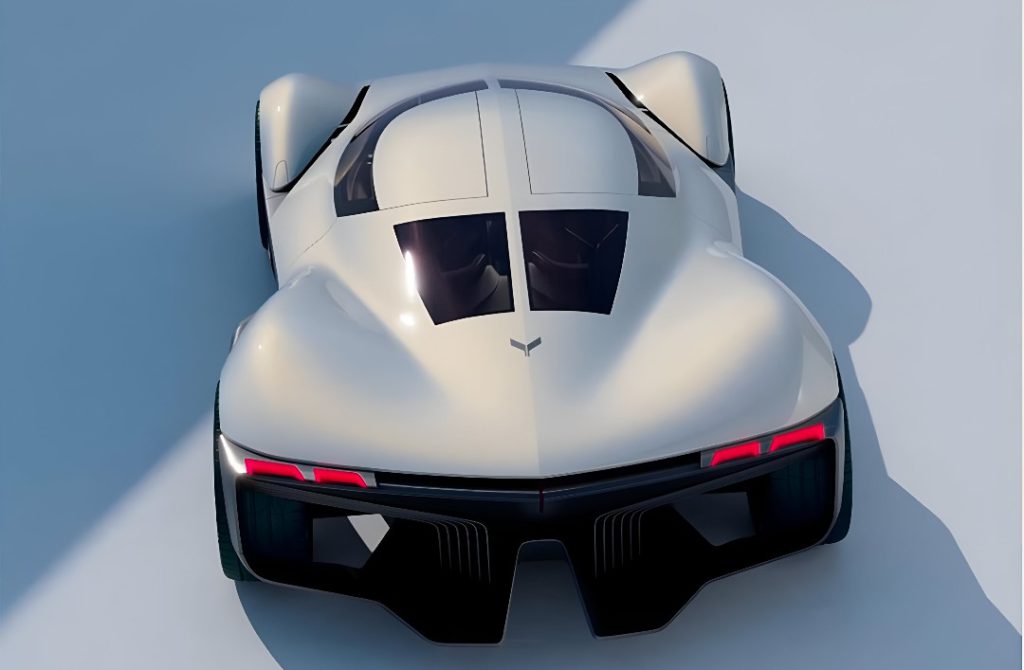
Corvette concept within the context of GM’s broader design direction, noting: “It’s been a while since I saw such bold styling from GM’s stables (remember the gorgeous Cadillac InnerSpace?).” This suggests that the concept represents part of a larger shift toward more daring design at General Motors, potentially signaling the company’s ambitions in the electric and autonomous vehicle space.
While the author acknowledges this specific concept won’t reach production, they express hope that elements of its design will “creep into the company’s production cars – whether in a new electric SUV or a future track-incinerating Corvette.” This perspective highlights the role concept cars play in automotive design – they’re not just fantasy exercises but testing grounds for ideas that might eventually appear in modified form on showroom floors. By creating concepts with such bold styling—like those featured in Weirdest GM Cars Ever Built—GM demonstrates its willingness to push boundaries and potentially leapfrog competitors in the increasingly design-conscious automotive marketplace.

